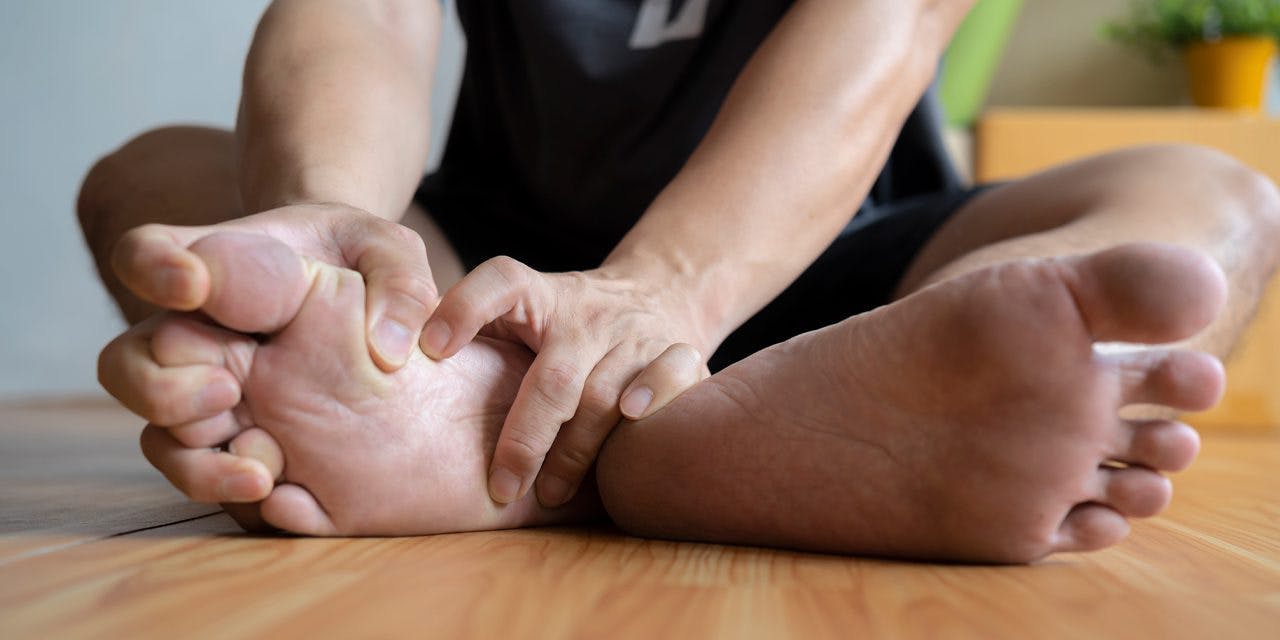Medical Card
Get Your Medical Marijuana Card Today
Meet with a healthcare provider in minutes and receive the best care for the best value.
Get your medical card online in minutes!
Get startedExplore A-Z conditions

Medical Card
Meet with a healthcare provider in minutes and receive the best care for the best value.
Neuropathy (nerve pain) is a condition that is associated with many different conditions, including:
The underlying causes of neuropathy are often inflammation, infectious disease, or a metabolic disorder. Some antibiotics, such as ciprofloxacin, and exposure to certain toxins may cause neuropathy.
Unfortunately, we have few medications that can effectively treat neuropathy and nerve pain. Gabapentin and pregabalin, often prescribed for nerve pain, can be harsh and addictive when used long-term. Medical cannabis could be an excellent way to treat nerve pain and may be more effective than current treatment methods.
Neuropathy is damage or dysfunction to one or more nerves, resulting in pain (often called “neuropathic pain”), numbness, tingling, headaches/migraines, and muscle weakness. If the motor nerves are affected, then lack of coordination and possibly even paralysis may occur. Some also have an extreme sensitivity to touch.
Neuropathy is often called peripheral neuropathy (PN). Peripheral nerves are found in the muscles, skin, and internal organs. The most common cause of neuropathy is nerve damage from diabetes, called “diabetic neuropathy.” Injuries and infections are also common causes of neuropathy.
Neuropathy affects an estimated 20 million Americans. Although there are more than 100 types of neuropathy, they can be broken down into four major categories:
Neuropathy can affect just one nerve (mononeuropathy), two or more nerves in different areas (multiple neuropathies), or multiple nerves (polyneuropathy). Although a wide range of diseases can cause neuropathy, there are three patterns of degeneration they all follow:

Medications prescribed for nerve pain are sometimes called “neuropathic pain agents.” The medications prescribed for chronic pain differ from those prescribed for neuropathic pain. Opioids and opiate-based drugs are rarely wholly effective for neuropathic pain, whereas anti-convulsant medications such as pregabalin and gabapentin are used instead.
Tricyclic antidepressants are also used for neuropathic pain. Other antidepressants, most notably serotonin and norepinephrine reuptake inhibitors (SNRIs) like venlafaxine and duloxetine, may also help manage neuropathic pain associated with fibromyalgia.
As neuropathic pain can often be felt at specific sites on the skin, capsaicin cream may help. High vitamin diets may also help, and steroids may also be prescribed. For headaches and migraines associated with neuropathy, amitriptyline may be prescribed.
Non-drug treatments include physiotherapy and the use of walking aids.
The endocannabinoid system (ECS) modulates inflammation and pain transmission in the nociceptive pathway. CB1 receptors are abundant in the regions of the brain implicated in the conduction and modulation of pain signals. CB2 receptors are found in the immune system and help regulate inflammation.
Following a nerve injury, neurons along the nociceptive pathway may become more reactive and responsive. This process is known as “sensitization,” where a cascade of cellular events results in painful nerve endings. Cannabinoids can reduce pain by modifying these cellular events, reducing the strength of pain signals sent through the nerve fiber. Medical cannabis is also full of phytocannabinoids and terpenes with anti-inflammatory properties.
One study found that neuropathy patients treated with a THC/CBD nasal spray reported significantly improved levels of pain, sleep quality, and quality of life according to an enhanced Subject Global Impression of Change (SGIC) scale. A 2013 study published in The Journal of Pain showed that even a low dose of vaporized, THC-rich cannabis significantly reduced neuropathic pain.
Patients with neuropathic pain respond well to THC-rich, CBD-rich, and THC:CBD equal ratios. Products with more balanced THC:CBD profiles can reduce the chances of adverse effects.
Products rich in beta-caryophyllene, linalool, pinene, eugenol, and myrcene may help reduce pain and inflammation associated with neuropathy.
Jeff Seidel, “I swore I’d never touch marijuana. Here’s why I finally did.” Detroit Free Press
“Whether drugs capable of exploiting the differences between the various cannabinoid receptors can yield greater analgesia with fewer adverse effects remains to be seen. This capability would be of substantial benefit in treating neuropathic pain, particularly that of central origin, because existing treatments are far from perfect. In the meantime, the current trial adds to the trickle of evidence that cannabis may help some of the patients who are struggling at present.”
McQuay, Henry J., “More evidence cannabis can help in neuropathic pain,” CMAJ : Canadian Medical Association journal = journal de l’Association medicale canadienne vol. 182,14 (2010): 1494-5. doi:10.1503/cmaj.100799
“Use of marijuana for chronic pain, neuropathic pain, and spasticity due to multiple sclerosis is supported by high-quality evidence. Six trials that included 325 patients examined chronic pain, 6 trials that included 396 patients investigated neuropathic pain, and 12 trials that included 1600 patients focused on multiple sclerosis. Several of these trials had positive results, suggesting that marijuana or cannabinoids may be efficacious for these indications.”
Hill KP. “Medical Marijuana for Treatment of Chronic Pain and Other Medical and Psychiatric Problems: A Clinical Review.” JAMA. 2015;313(24):2474–2483. doi:10.1001/jama.2015.6199
There are few effective treatments available for neuropathic pain. Medical cannabis is effective for reducing nerve pain and is preferred by many over current prescription medications as it has fewer adverse side effects, reduces nerve pain, and improves the quality of life with improved sleep and appetite.
Medical Cannabis for Nerve Pain (Neuropathy)
CBD and the Brain: The Impact of Cannabidiol on Brain Health
Connect with a licensed physician online in minutes.
Animal Study
Clinical Meta-analysis
Double Blind Human Trial
Human Trial
Laboratory Study
Meta-analysis
Total studies
85 studies
7 studies
1 studies
Select your state from the drop down and we’ll let you know.
The information in our comprehensive A to Z encyclopedia comes from real scientific studies.
Uncover the detailed results of these studies and find out how effective medical marijuana is for dozens of conditions.